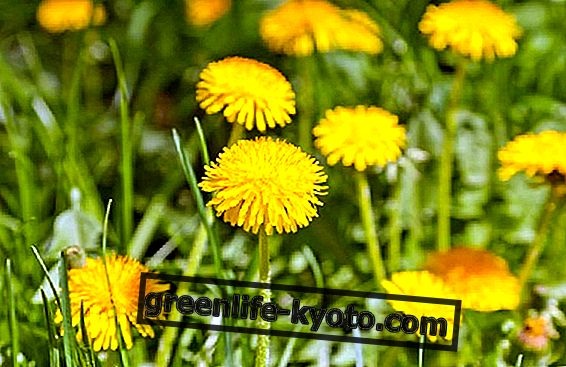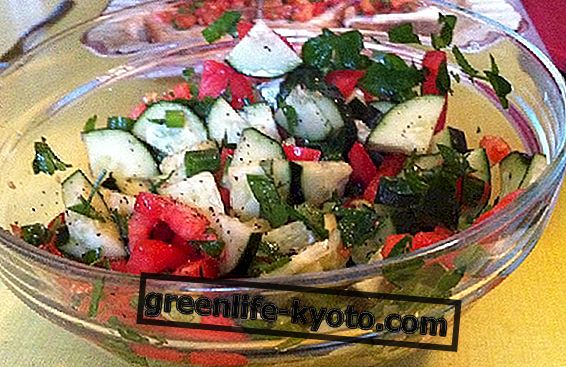
If you think you have already tried all the varieties of lentils, perhaps you are wrong. There are really many, almost infinite, types of lentils, considering world production.
From the Indian dhal legumes to the small and tasty Norcia lentils, from the large, fleshy green lentils to the peeled red lentils that flakes off in just a few minutes of cooking. And it doesn't end there.
Here are 15 varieties of lentils with their provenance and their characteristics: the first 7, all Italian, do not exhaust the heterogeneous production of the Peninsula .
1. Norcia Italian lentils
Small, tasty, dark green, they are the best known, perhaps, of Italy. The Castelluccio di Norcia IGP lentil is born on the karstic planes, in the wonderful scenery of the Sibillini mountains, at about 1500 meters high. It is not chemically treated and is produced in limited quantities, which is why it is notoriously more expensive than the others.
In terms of nutritional characteristics, it is rich in proteins, vitamins and mineral salts, such as potassium, iron and phosphorus. It has a thin skin, so it does not need to be soaked and cooks in a short time. On the official website you will find many recipes.
2. Lentils from Colfiorito
Very small and with different color tones (from light green, to rosé, to yellow, to tobacco), Colfiorit lentils or, a traditional Umbrian product, are tender and tasty. Like the Norcia lentil, this legume also does not need to be soaked and cooks in about 20 minutes.
They contain carbohydrates, proteins, vitamins, fiber, iron and phosphorus and low fat. They are perfect in moist, with a mashed potato as an accompaniment.
3. Rascino lentils
A Slow Food Presidium, Rascino lentils are grown in the province of Rieti, on the Abruzzo border, with traditional and organic methods, by a few selected producers who have kept the seeds and carried the story forward.
This lentil variety has a small, brown seed with some reddish streaks here and there. It has a pleasant taste, a high protein content and remains well integrated in cooking: it is considered a niche product.
4. Lentils from Ustica
They are a very small and dark brown lentil variety that grows on this small Sicilian volcanic island.
It is a very important ingredient of the local cuisine, a poor food that, par excellence, enriches peasant soups, accompanies vegetables or is left to stew with wild fennel or basil.
It does not need soaking and is tasty and tender . Classic is pasta and lentils, prepared by breaking up spaghetti.
5. Lentils from Pantelleria
Pantelleria lentils, very small and dark, are tasty and very digestible. It is advisable to leave them to soak for about half an hour before cooking them to taste for another thirty minutes.
6. Leonforte black lentils
Typical of this Sicilian area, the Leonforte lentil was born in the province of Enna and is rare and delicious.
It has a particular taste and is suitable for the preparation of haute cuisine dishes, to give color and create magic at the table. It has a high protein and iron content.
7. Giant green lentils from Altamura
From Puglia of the Murgia to the New Year's tables : this is the classic lentil that accompanies the Italian dinner. It is recognized for its beautiful green color, in fact it is harvested just before complete maturation, and its taste is sweeter and more herbaceous than its smaller sisters.
The richness of iron, carbohydrates, fiber, vitamins and minerals make it a valuable food. It needs a soak of about 3 hours .
8. Spanish brown lentils, Pardina variety
It is the lentil known to be the best in Spain, it has a rich taste and a high starch content, which makes it suitable for dishes that need a nice creamy consistency.
About twenty minutes of soaking and cooking for just over half an hour will be enough to enjoy delicious dishes of Spanish origin, but not only.
9. Puy French lentils
They are very particular, born around the eponymous French town of Le Puy, in the Haute-Loire; small, they have a dark green color with streaks tending to blue-black. This lentil remains compact after cooking, giving dishes with a creamy consistency and rich in flavor. It is said to have a slightly peppery taste.
10. Asian black lentils, mung or Beluga lentils
Shimmering like the Beluga caviar, from which they take their name, they have a black color and a flattened shape. They originate from Asia, in particular they are consumed in India, called urad dhal .
They have a sweet and aromatic taste, excellent in combination with dishes such as fish and precious as a base for salads. They are rich in fiber and protein, low in fat. They do not need soaking, they cook in about 20 minutes.
11. Lentils pusha of Ecuador
Introduced thanks to fair trade also in Italy, lentils are very tasty and suitable for dishes with an exotic and spicy flavor. They are green-brown in color and are perfect in summer and in vegetarian or vegan diets, to enrich fresh salads.
12. Yellow Indian lentils
Their name is mong dhal, they are the large decorticated Indian yellow lentils. Rich in proteins and minerals, they are excellent both as a soup and as a main course, enriched with curcuma, ginger and cumin, and are also suitable as a base for veg meatballs and lentil flour.
13. Red Masoor Lentils
They are the small Indian coral-colored lentils, used above all for the tasty and spicy Indian soups, but not only. Once cooked they take on a yellow color. They cook very quickly, do not require soaking, are easily digestible and assimilable and have many beneficial properties, being rich in proteins and good fats, such as Omega 3s.
14. Canadian green lentils
They are large and very widespread lentils, especially very exported, even in Italy. The best come from the western Canadian region of Saskatchewan, which boasts a high quality production. They are mainly used as a side dish, being just fleshy, with a soft consistency and a delicate taste.
15. Red Egyptian lentils
These are very small red lentils from northern Africa. They contain iron, protein, vegetable fiber and potassium. They do not need to be soaked and cook quickly. They are excellent both for Koshari, the only Egyptian dish, which is served as a puree or as an accompaniment to couscous.













